Instrumental Music in London
The London harpsichord market of the mid 18th century was dominated by two makers: Shudi and Kirckman. The latter produced about two thousand instruments, of which more than a hundred have come down to us.
Though they were by no means mass-produced, English harpsichords , with decoration consisting only of marquetry, would be sold for prices accessible to the middle classes.
English harpsichords thus differed from their French counterparts, not only because of less aristocratic patronage and scant decoration of the sounding board, but above all by the absence of coupling of the upper and lower manuals, and by a specific geometry which gives an original sound.
The harpsichord, a cumbersome fixture, soon became a status symbol, the favourite instrument of young ladies, for whom it was an obvious asset in the marriage market.
A spinet is smaller.
The pianoforte developed later.
Shudi’s ‘swell’
the ‘swell’ was a device patented by Shudi in 1769 to resist the competition of the pianoforte.
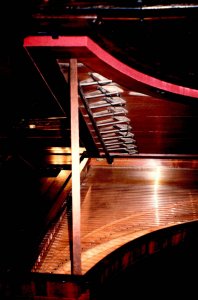
- The ‘swell’
- John Broadwood, single-manual harpsichord with Venetian swell
(London 1793)
Russell Collection of Early Keyboard Instruments, St Cecilia’s Hall, Cowgate, Edinburgh
[click on the picture to enlarge it]
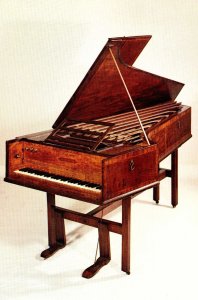
- The ‘swell’
- John Broadwood, single-manual harpsichord with Venetian swell
(London 1793)
Russell Collection of Early Keyboard Instruments, St Cecilia’s Hall, Cowgate, Edinburgh
[click on the picture to enlarge it]
Kirckman’s Harpsichord
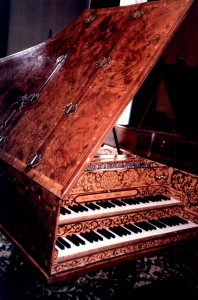
- Harpsichord by Kirckman
- (London, 1755)
Russell Collection of Early Keyboard Instruments, Edinburgh
[click on the picture to enlarge it]
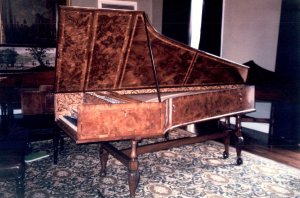
- Harpsichord by Kirckman
- (London, 1755)
Russell Collection of Early Keyboard Instruments, Edinburgh
[click on the picture to enlarge it]
- Purcell Suite n°1 in G major, prelude (extract)
- track n°2 of record Harpsichord Suites (Paris: Erato, 1995)
Olivier Beaumont on Kirckman harpsichord, London 1752
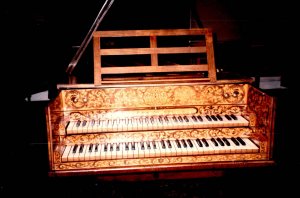
- Kirckman harpsichord (details)
- [click on the picture to enlarge it]
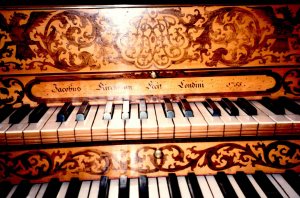
- Kirckman harpsichord (details)
- [click on the picture to enlarge it]
Spinet
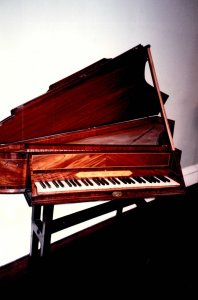
- Spinet
- Spinet, by Baker Harris, 1776
Russell Collection of Early Keyboard Instruments, Edinburgh
[click on the picture to enlarge it]
Spinets were also made in Edinburgh
Prices
The range of prices for an English harpsichord in the 18th century would extend from 35 guineas for a single-manual Shudi with two eight-foot stops, to 80 guineas for a large instrument with two manuals, two stops of 8 feet, one of 4 feet and a ‘swell’ - a device patented by Shudi in 1769 to resist the competition of the pianoforte.
Such sums should be considered by the standards of the average incomes of the time.

